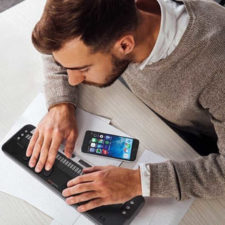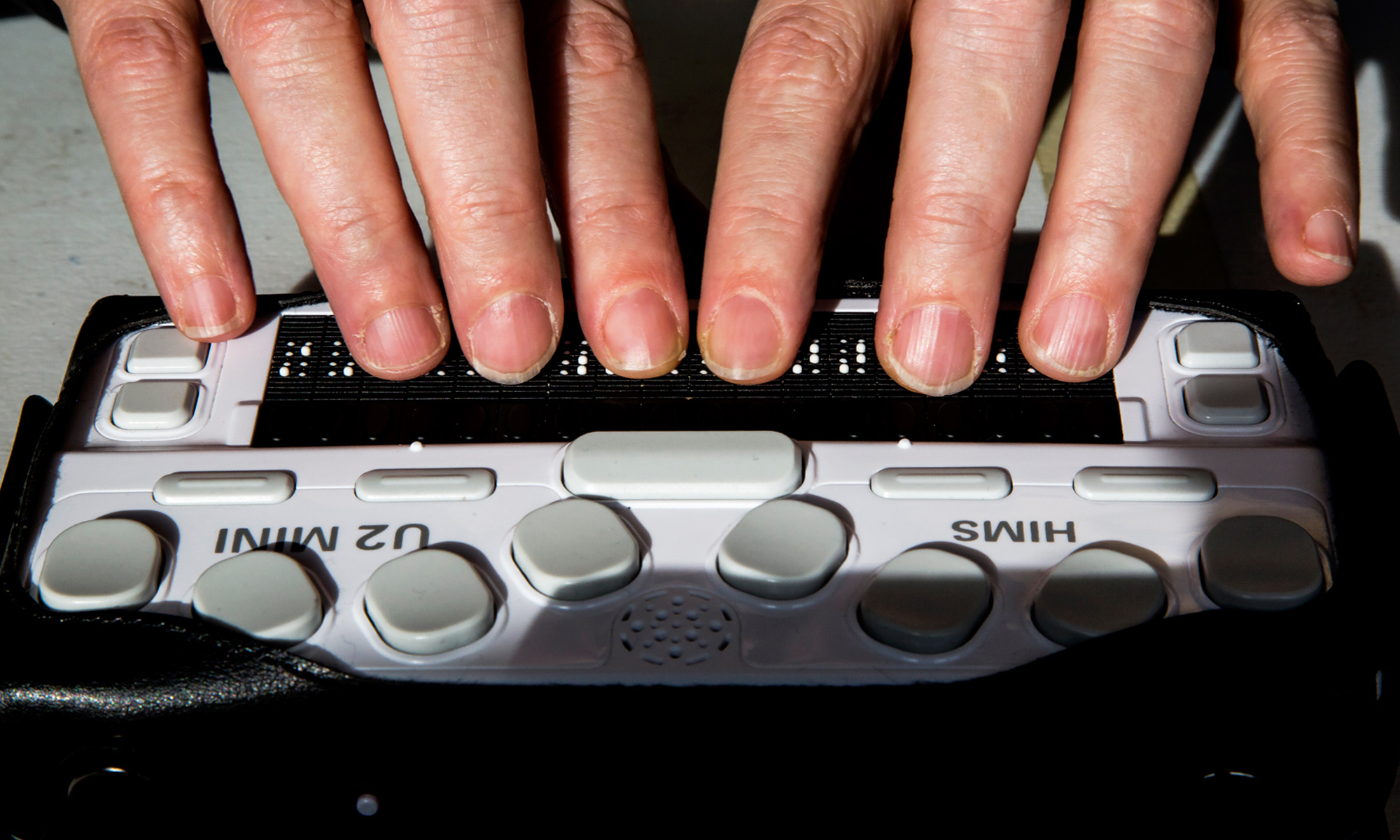Enhancing Lives With Advanced Assistive Gadgets for the Blind
The combination of advanced assistive devices for the blind is transforming exactly how people experience their environments and interact with their areas. What does this advancement indicate for the future of assistive innovation and its function in equipping people?
Review of Assistive Instruments
Assistive devices for the blind encompass a varied array of tools and technologies created to enhance self-reliance and improve the quality of life for people with aesthetic impairments. These tools deal with different requirements, from navigating and flexibility to communication and everyday job management.
Among the key categories of assistive tools includes mobility aids, such as white walking canes and guide canines, which help customers browse their surroundings securely. Electronic traveling aids, equipped with sensors and audio responses, also play a considerable function in movement improvement.
Additionally, tools that assist with everyday living tasks, such as adaptive cooking area tools, Braille labels, and speaking watches, equip individuals to do tasks individually. Communication help, including display readers and Braille screens, promote accessibility to information and allow people to involve successfully with the electronic globe.
Moreover, low-tech remedies like multiplying glasses and large-print materials continue to be essential for numerous individuals. Collectively, these assistive gadgets offer not just as practical tools however additionally as vital enablers of autonomy, promoting higher participation in a world that usually focuses on sighted experiences. Their integration into day-to-day live is crucial for promoting inclusivity and improving total well-being for those with aesthetic problems.
Ingenious Technologies being used
Development in innovation has actually substantially transformed the landscape of devices offered for individuals with visual problems. Amongst one of the most notable developments are wise glasses integrated with augmented truth, which offer real-time navigation help and things recognition. These gadgets utilize advanced video cameras and expert system to provide acoustic hints, enhancing the customer's spatial understanding and freedom.
Furthermore, mobile applications have actually become powerful sources, allowing customers to recognize money, read message out loud, and browse unfamiliar settings via spoken guidelines. Devices such as Braille display screens and refreshable Braille tools remain to advance, supplying smooth connection with computers and smartphones, therefore boosting communication and access to details.
Wearable modern technology, including smartwatches equipped with voice-activated attributes, further encourages customers by promoting quick accessibility to alerts and signals without requiring visual involvement. Tactile maps and 3D printing are likewise gaining grip, supplying tangible depictions of spaces that aid in positioning and wheelchair training.
Collectively, these cutting-edge innovations not just boost the every day lives of visually impaired individuals but additionally foster better freedom, inclusivity, and interaction with the more comprehensive community, consequently reshaping assumptions of access. (AI-powered visual aids)
Personal Stories of Empowerment
Empowerment often emerges from individual experiences that highlight the transformative impact of innovation on people with visual disabilities. Take, for example, the tale of Sarah, a young musician who regained her enthusiasm for paint with making use of a smart walking stick equipped with challenge discovery. This gadget not only facilitated her flexibility but instilled a newfound self-confidence, enabling her to browse public rooms individually and pursue her creative ventures.

These narratives highlight the profound effects that progressed assistive tools can have on daily life. By making it possible browse around this site for people to get rid of barriers, innovation promotes a sense of freedom and self-regard. Such empowerment stories function as a testimony to the possibility of advancement, illustrating exactly how the right devices can substantially improve quality of life and open doors to brand-new opportunities for those with visual impairments.
Benefits of Advanced Solutions
The assimilation of sophisticated technology right into assistive tools dramatically read the article changes daily experiences for those impacted by vision loss. OCR devices for the blind. Tools such as wise walking canes geared up with sensing units, navigation applications, and wearable technology are designed to supply real-time feedback, boosting spatial understanding and reducing the risks associated with flexibility.
Moreover, advanced assistive technologies promote social inclusion by facilitating communication and interaction. Voice-activated gadgets and applications enable people to accessibility details and involve with their environments independently, damaging barriers that previously prevented their involvement in instructional, expert, and social setups.
Furthermore, the personalization and adaptability of these solutions satisfy the diverse needs of customers, thereby enhancing their overall top quality of life. Enhanced performance, such as item recognition and text-to-speech capabilities, equips people with visual disabilities to execute jobs that they might have once discovered testing. Ultimately, advanced assistive innovations not just boost self-reliance and safety and security yet likewise advertise dignity and self-worth, allowing customers to lead meeting lives.
Future Trends in Assistive Technology
As technology remains to advance, the landscape of assistive tools for the blind is poised for remarkable improvements that will even more improve ease of access and independence. Emerging patterns in assistive technology show a change towards enhanced assimilation of expert system (AI) and artificial intelligence, allowing gadgets to adjust to individual customer requires in real-time. These advancements are anticipated to promote even more intuitive navigating systems that can identify challenges and give audio comments, dramatically improving outdoor flexibility.
Furthermore, the growth of wearable technology, such as smart glasses furnished with augmented reality, will certainly allow users to get contextual details about their surroundings, consequently enriching their spatial recognition. Developments in haptic modern technology guarantee to develop responsive comments gadgets, enabling individuals to regard details through touch, enhancing understanding and communication with their setting.
Telecommunication advancements are likewise leading the way for remote help remedies, where experienced professionals can supply guidance using video clip telephone calls, making certain support is readily available. As these trends unfold, the future of assistive devices for the blind will most certainly cultivate greater freedom, empowering people to navigate their globe with self-confidence and ease.

Conclusion
The integration of advanced assistive devices for the his response blind stands for a significant innovation in promoting freedom and enhancing top quality of life. By utilizing cutting-edge modern technologies, these devices encourage customers to browse their atmospheres with better confidence and freedom. As the field proceeds to advance, recurring r & d will likely generate also extra innovative options, even more transforming the lived experiences of individuals with aesthetic disabilities and promoting a better feeling of addition within society.
The assimilation of advanced assistive tools for the blind is transforming just how individuals experience their surroundings and connect with their communities. The combination of advanced modern technology into assistive gadgets considerably changes everyday experiences for those influenced by vision loss.As technology proceeds to advance, the landscape of assistive devices for the blind is poised for amazing advancements that will further enhance accessibility and independence. Emerging patterns in assistive innovation suggest a shift toward boosted integration of fabricated intelligence (AI) and maker understanding, enabling devices to adapt to individual user requires in real-time.The integration of sophisticated assistive tools for the blind represents a substantial development in promoting independence and improving top quality of life.